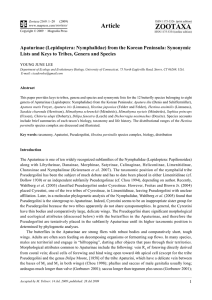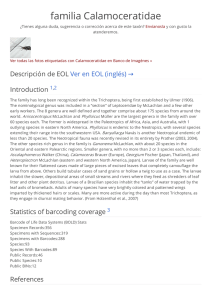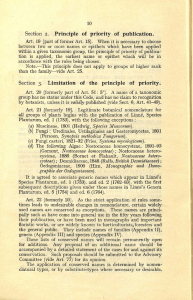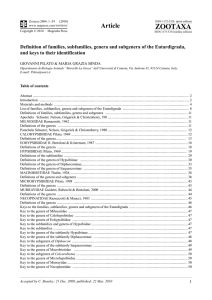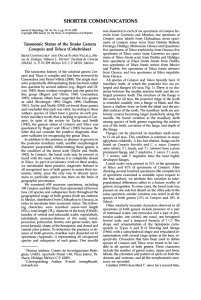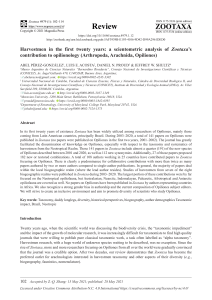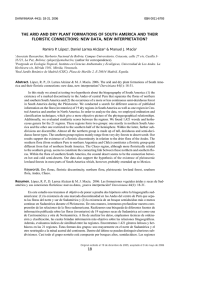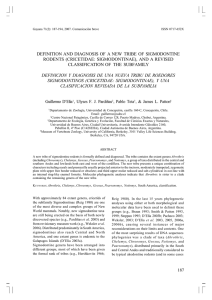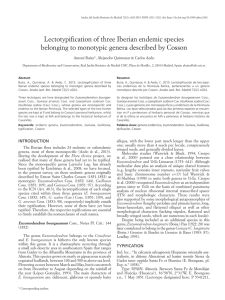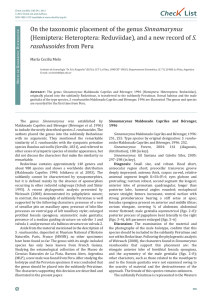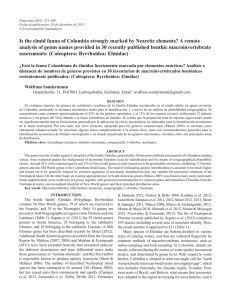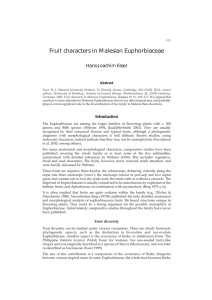zootaxa - Magnolia press
Anuncio
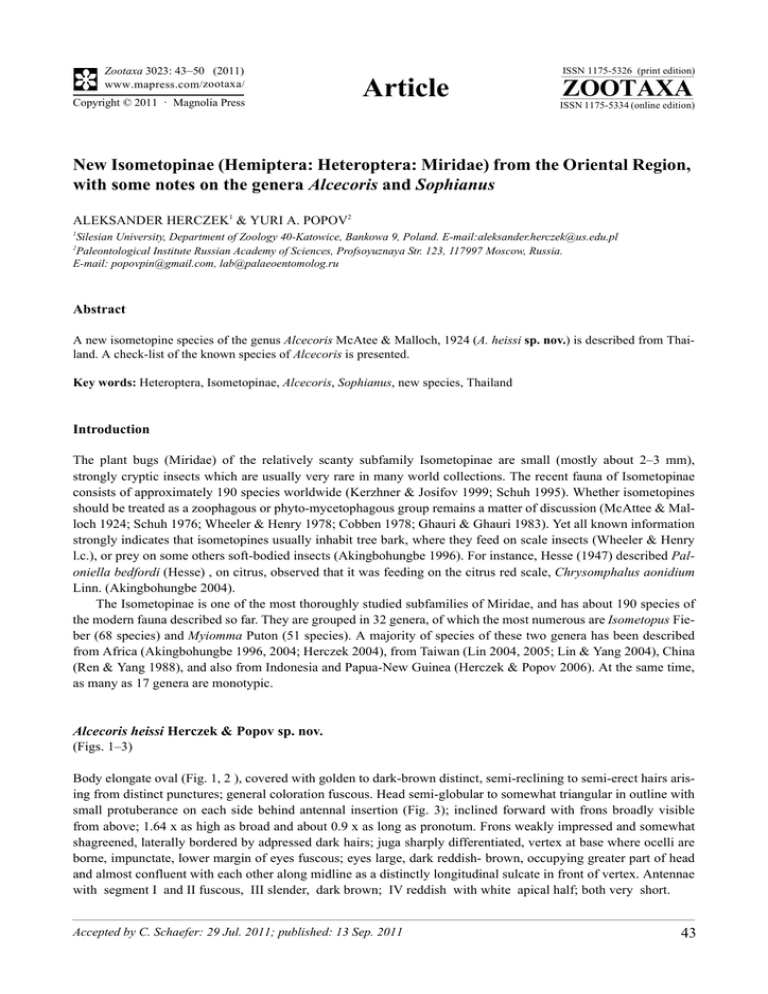
Zootaxa 3023: 43–50 (2011) www.mapress.com / zootaxa/ Copyright © 2011 · Magnolia Press ISSN 1175-5326 (print edition) Article ZOOTAXA ISSN 1175-5334 (online edition) New Isometopinae (Hemiptera: Heteroptera: Miridae) from the Oriental Region, with some notes on the genera Alcecoris and Sophianus ALEKSANDER HERCZEK1 & YURI A. POPOV2 1 Silesian University, Department of Zoology 40-Katowice, Bankowa 9, Poland. E-mail:[email protected] Paleontological Institute Russian Academy of Sciences, Profsoyuznaya Str. 123, 117997 Moscow, Russia. E-mail: [email protected], [email protected] 2 Abstract A new isometopine species of the genus Alcecoris McAtee & Malloch, 1924 (A. heissi sp. nov.) is described from Thailand. A check-list of the known species of Alcecoris is presented. Key words: Heteroptera, Isometopinae, Alcecoris, Sophianus, new species, Thailand Introduction The plant bugs (Miridae) of the relatively scanty subfamily Isometopinae are small (mostly about 2–3 mm), strongly cryptic insects which are usually very rare in many world collections. The recent fauna of Isometopinae consists of approximately 190 species worldwide (Kerzhner & Josifov 1999; Schuh 1995). Whether isometopines should be treated as a zoophagous or phyto-mycetophagous group remains a matter of discussion (McAttee & Malloch 1924; Schuh 1976; Wheeler & Henry 1978; Cobben 1978; Ghauri & Ghauri 1983). Yet all known information strongly indicates that isometopines usually inhabit tree bark, where they feed on scale insects (Wheeler & Henry l.c.), or prey on some others soft-bodied insects (Akingbohungbe 1996). For instance, Hesse (1947) described Paloniella bedfordi (Hesse) , on citrus, observed that it was feeding on the citrus red scale, Chrysomphalus aonidium Linn. (Akingbohungbe 2004). The Isometopinae is one of the most thoroughly studied subfamilies of Miridae, and has about 190 species of the modern fauna described so far. They are grouped in 32 genera, of which the most numerous are Isometopus Fieber (68 species) and Myiomma Puton (51 species). A majority of species of these two genera has been described from Africa (Akingbohungbe 1996, 2004; Herczek 2004), from Taiwan (Lin 2004, 2005; Lin & Yang 2004), China (Ren & Yang 1988), and also from Indonesia and Papua-New Guinea (Herczek & Popov 2006). At the same time, as many as 17 genera are monotypic. Alcecoris heissi Herczek & Popov sp. nov. (Figs. 1–3) Body elongate oval (Fig. 1, 2 ), covered with golden to dark-brown distinct, semi-reclining to semi-erect hairs arising from distinct punctures; general coloration fuscous. Head semi-globular to somewhat triangular in outline with small protuberance on each side behind antennal insertion (Fig. 3); inclined forward with frons broadly visible from above; 1.64 x as high as broad and about 0.9 x as long as pronotum. Frons weakly impressed and somewhat shagreened, laterally bordered by adpressed dark hairs; juga sharply differentiated, vertex at base where ocelli are borne, impunctate, lower margin of eyes fuscous; eyes large, dark reddish- brown, occupying greater part of head and almost confluent with each other along midline as a distinctly longitudinal sulcate in front of vertex. Antennae with segment I and II fuscous, III slender, dark brown; IV reddish with white apical half; both very short. Accepted by C. Schaefer: 29 Jul. 2011; published: 13 Sep. 2011 43
